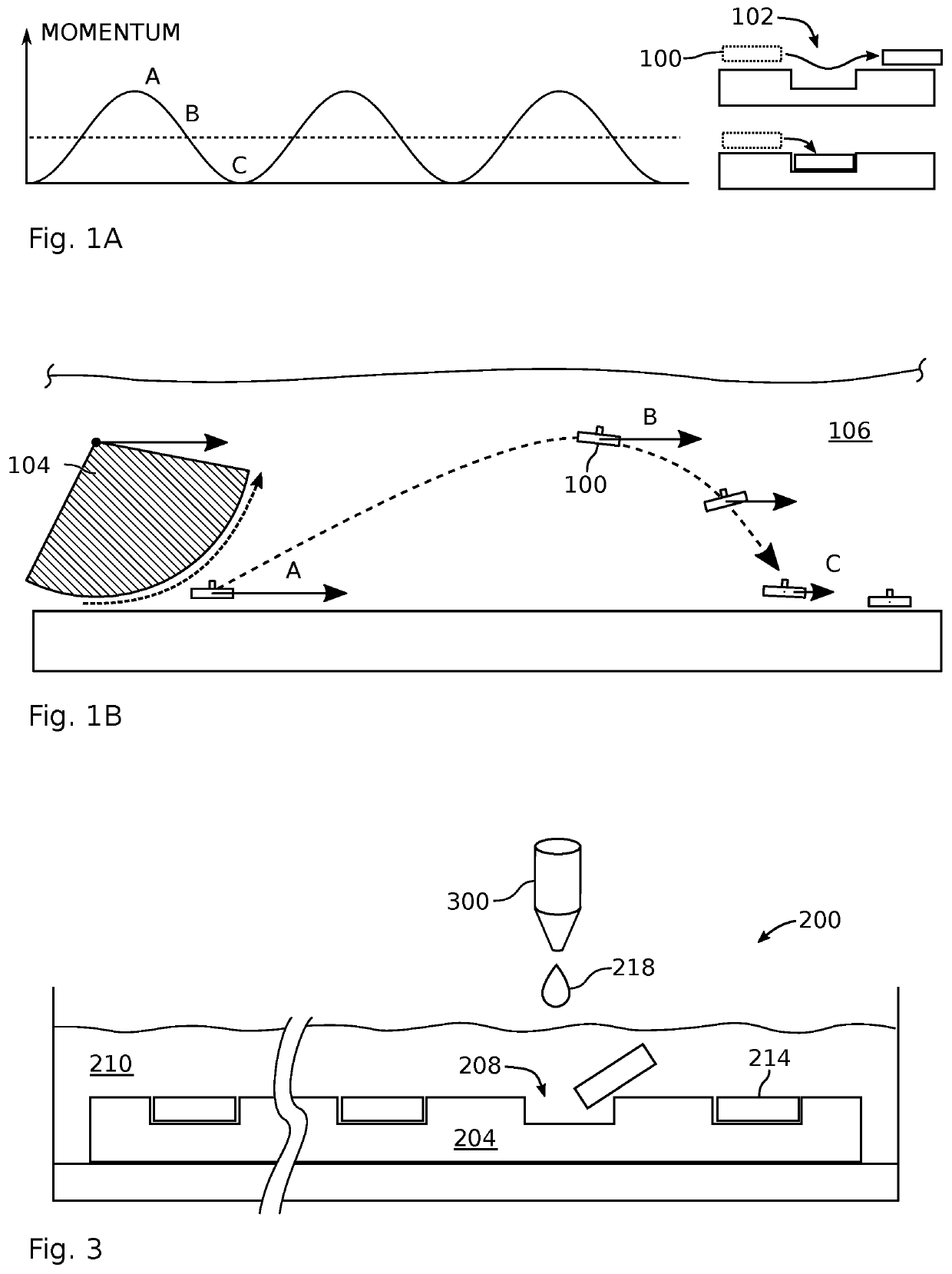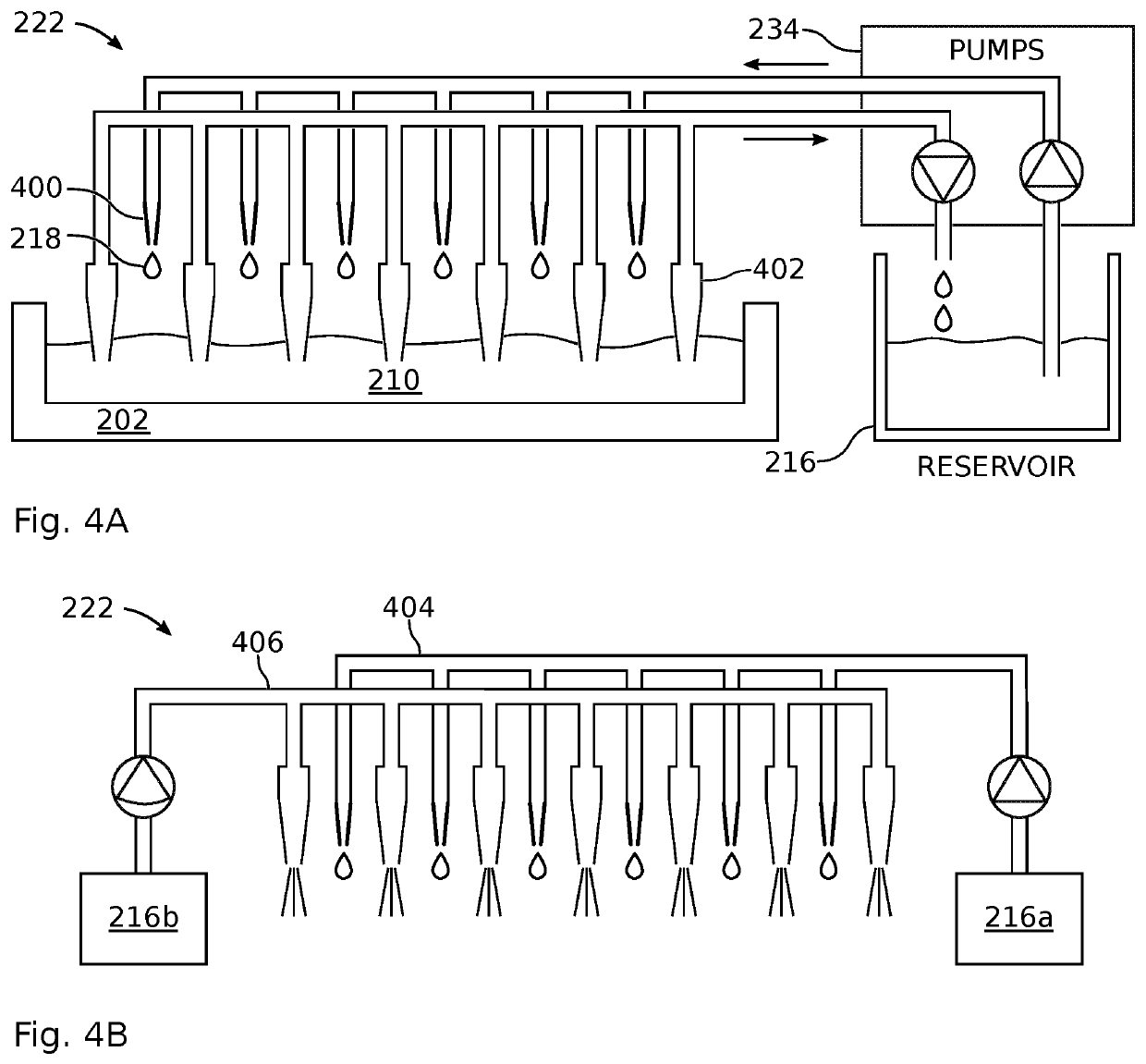Microperturbation assembly system and method
a microperturbation and assembly system technology, applied in the field of microperturbation assembly system and method, can solve the problems of difficult to achieve the flow velocity uniformity and microcomponent dispensing scheme necessary for a high yield over the whole assembly substrate, and take several hours to complete, etc., to achieve simple and low-cost infrastructure, maximize assembly yield and speed, and cost-effective scalable to large areas
- Summary
- Abstract
- Description
- Claims
- Application Information
AI Technical Summary
Benefits of technology
Problems solved by technology
Method used
Image
Examples
Embodiment Construction
[0032]FIGS. 2A and 2B are partial cross-sectional views of an emissive substrate microperturbation fluidic assembly system. The system 200 comprises a substrate chuck 202 for engaging an emissive substrate 204. The emissive substrate 204 has a top surface 206 patterned to form an array of wells 208. A liquid suspension 210 overlies the emissive substrate top surface, comprising a first liquid 212 and emissive elements 214. The system comprises a reservoir 216, which contains a perturbation medium 218 and has an outlet port 220. The perturbation medium 218 may be the first liquid 212, a second liquid, or a gas. Optionally but not shown, a liquid perturbation medium may include emissive elements. One example of an emissive element is a light emitting diode (LED). Although not light emissive, other two-terminal surface mount elements include photodiodes, thermistors, pressure sensors, and piezoelectric devices. The emissive element may also be referred to as a surface mount emissive el...
PUM
| Property | Measurement | Unit |
|---|---|---|
| frequency | aaaaa | aaaaa |
| thickness | aaaaa | aaaaa |
| gravitational self-pressure | aaaaa | aaaaa |
Abstract
Description
Claims
Application Information
 Login to View More
Login to View More - R&D
- Intellectual Property
- Life Sciences
- Materials
- Tech Scout
- Unparalleled Data Quality
- Higher Quality Content
- 60% Fewer Hallucinations
Browse by: Latest US Patents, China's latest patents, Technical Efficacy Thesaurus, Application Domain, Technology Topic, Popular Technical Reports.
© 2025 PatSnap. All rights reserved.Legal|Privacy policy|Modern Slavery Act Transparency Statement|Sitemap|About US| Contact US: help@patsnap.com



